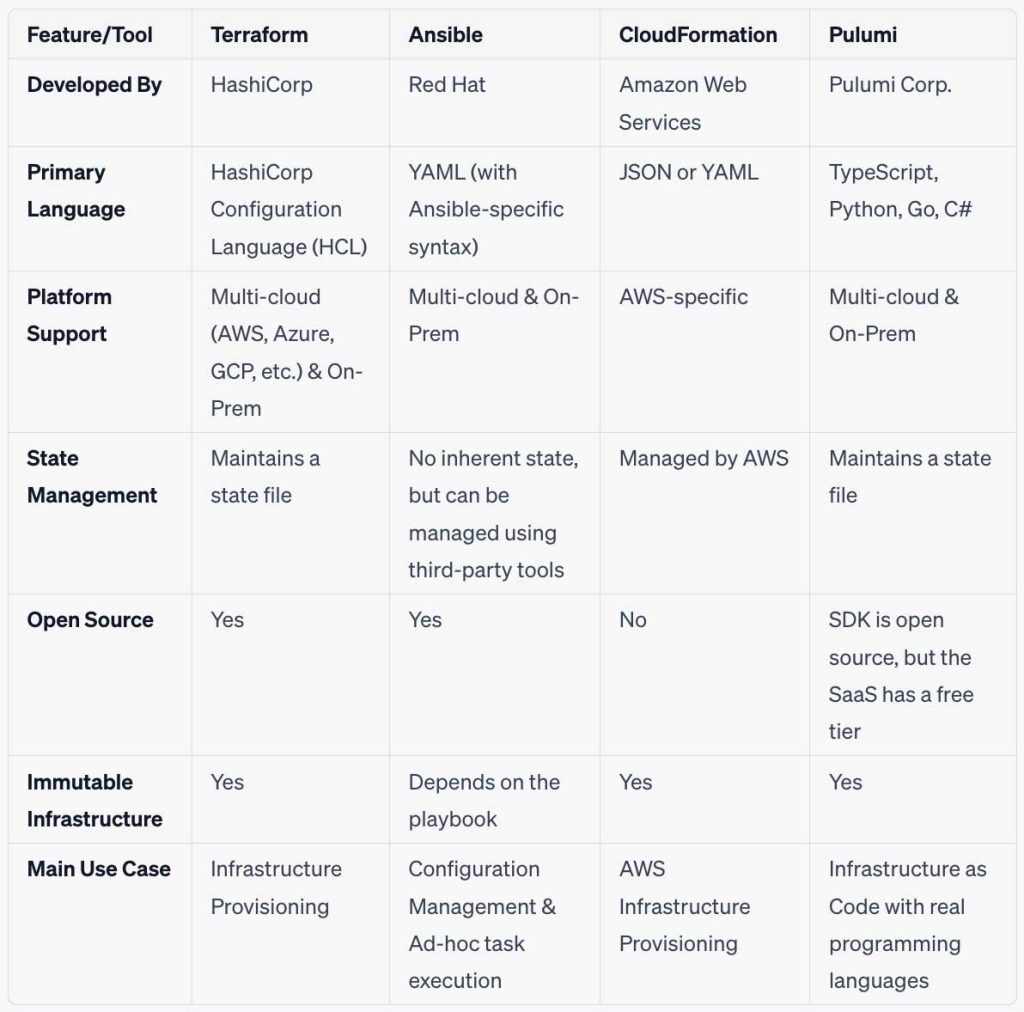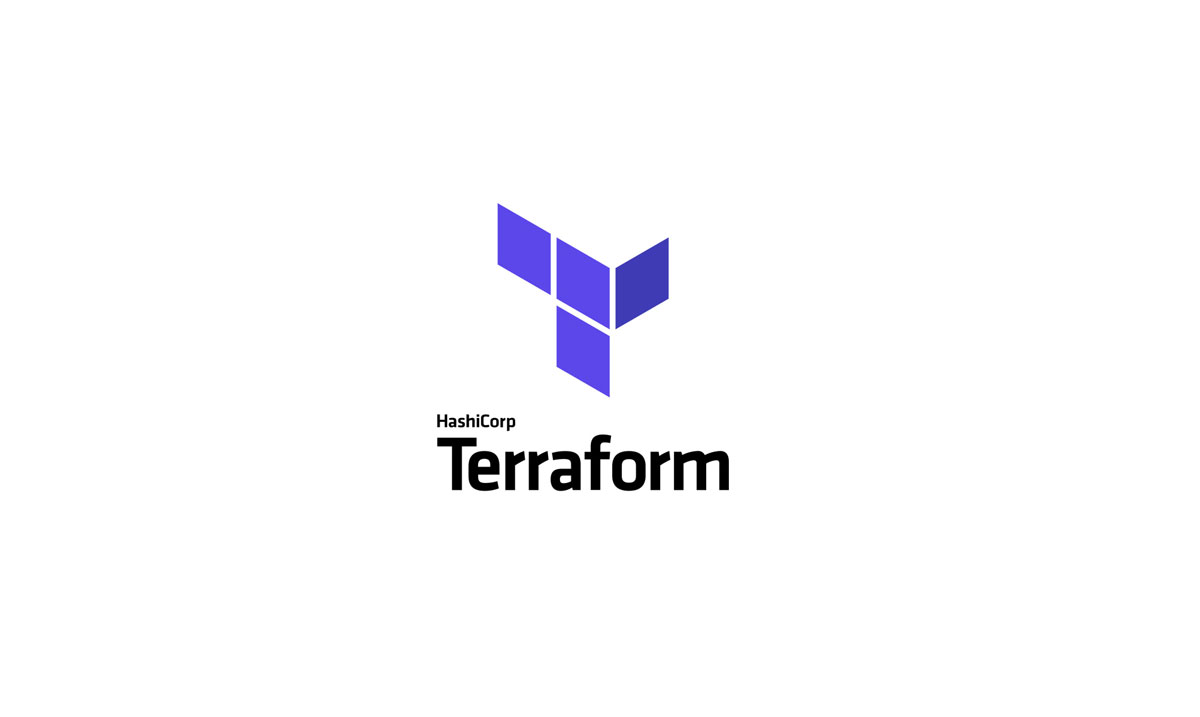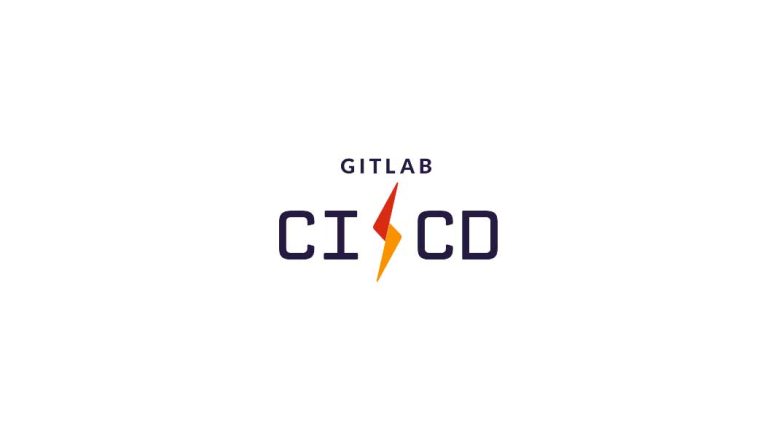Terraform Infrastructure as Code Tool
Terraform is a popular Infrastructure as Code (IaC) tool developed by HashiCorp that allows you to define and provide data center infrastructure using a declarative configuration language. With Terraform, you can manage and version your infrastructure in a consistent and repeatable way.
Intro to Terraform
Terraform, developed by HashiCorp, is a widely adopted Infrastructure as Code (IaC) tool that allows developers and operations teams to codify and manage cloud infrastructure using a declarative configuration language. In practical applications, for instance, a team could use Terraform to define and provision a complete AWS environment—spanning virtual machines, databases, and networking components—by writing concise configurations, thereby ensuring consistent and repeatable deployments across various stages of a project or multiple geographical regions.
Terraform Quick Facts
- Origins and Ownership: Terraform was developed by HashiCorp, a company known for creating tools like Vagrant, Consul, and Vault that are central to modern cloud and infrastructure management.
- Popularity and Adoption: As of 2021, Terraform has been starred over 25,000 times on GitHub, making it one of the most popular Infrastructure as Code (IaC) tools available. Many Fortune 500 companies rely on Terraform for their infrastructure provisioning needs.
- Extensive Provider Support: Terraform supports over 200 providers, meaning it can communicate and manage infrastructure components across popular cloud platforms like AWS, Azure, Google Cloud, and even services like GitHub and Datadog.
- Language: Terraform uses its own domain-specific language called HashiCorp Configuration Language (HCL). This language is designed to be both human-readable and machine-friendly, striking a balance between clarity and efficiency.
- State Management: A key differentiator for Terraform is its state management capabilities. Terraform maintains a state file that represents the real-time configuration of the infrastructure, allowing for precise and predictable changes and ensuring idempotency in infrastructure deployments.
Table of Contents:
- What is Infrastructure as Code (IaC)?
- Why Use Terraform?
- Terraform Core Concepts
- Getting Started with Terraform
- Terraform Language (HCL)
- Best Practices
- Conclusion
1. What is Infrastructure as Code (IaC)?
Infrastructure as Code is a practice in which infrastructure (like virtual machines, networks, storage, etc.) is provisioned and managed using machine-readable definition files, rather than the traditional interactive configuration tools.
2. Why Use Terraform?
- Platform Agnostic: Terraform supports a multitude of providers like AWS, Azure, Google Cloud, and many others.
- Declarative Language: You describe what you want, and Terraform figures out how to achieve that state.
- Immutable Infrastructure: Instead of modifying existing resources, Terraform provisions a new set of resources to match the desired state.
- State Management: Terraform maintains a state file to keep track of the current infrastructure state.
- Modular: Allows creating reusable infrastructure components.
- Extensible: It can be extended with plugins to support more platforms.
Terraform Compared to Alternatives
Terraform is better understood when compared to alternatives that are used to provide similar functionality. Below is a chart that compares Terraform to some of its closest alternatives: Ansible, CloudFormation, and Pulumi.

3. Terraform Core Concepts
- Providers: Plugins that interact with APIs of cloud providers or other services.
- Resources: Infrastructure components like virtual machines, security groups, networks, etc.
- Data Sources: Allow data to be fetched or computed for use elsewhere in Terraform configuration.
- State: A local file that contains the known state of the infrastructure.
- Provisioners: Used to execute scripts on a local or remote machine as part of resource creation or destruction.
4. Getting Started with Terraform
Installing Terraform
Download the appropriate binary from the Terraform website and include it in your system’s PATH.
Basic Workflow
- Initialize: Before you can apply any Terraform configurations, you need to initialize the working directory.
terraform init- Writing a Configuration: Create a file named
main.tfand write your Terraform configurations. - Plan: Before applying changes, it’s a good practice to see what changes Terraform plans to make.
terraform plan- Apply: This will apply the changes described in your Terraform configurations.
terraform apply- Destroy: To destroy the infrastructure created.
terraform destroy5. Terraform Language (HCL)
HCL (HashiCorp Configuration Language) is a configuration language used by Terraform.
Basic Syntax:
resource "aws_instance" "example" {
ami = "ami-0c55b159cbfafe1f0"
instance_type = "t2.micro"
}Variables, outputs, and modules can also be defined to make the code more modular and reusable.
6. Best Practices
- Version Control: Store your Terraform code in version control systems like Git.
- Modularity: Break your configurations into modules to make them reusable.
- Remote State: Instead of storing state files locally, use remote backends like Amazon S3, Azure Blob Storage, etc.
- Sensitive Data: Use Terraform’s
secretvalues or tools like HashiCorp Vault to manage secrets. - Review Plans: Always review the plan output before applying changes.
- State Locking: Use state locking to ensure that only one person can modify the infrastructure at a time.
Terraform offers a powerful and extensible framework for defining and creating cloud infrastructure in a repeatable and predictable manner. By embracing the Infrastructure as Code principles, teams can better manage, version, and deploy their infrastructure, making the entire process more efficient and error-free.







